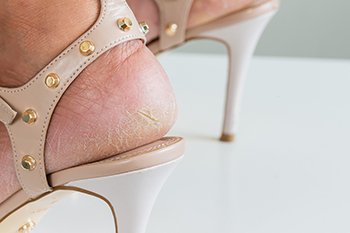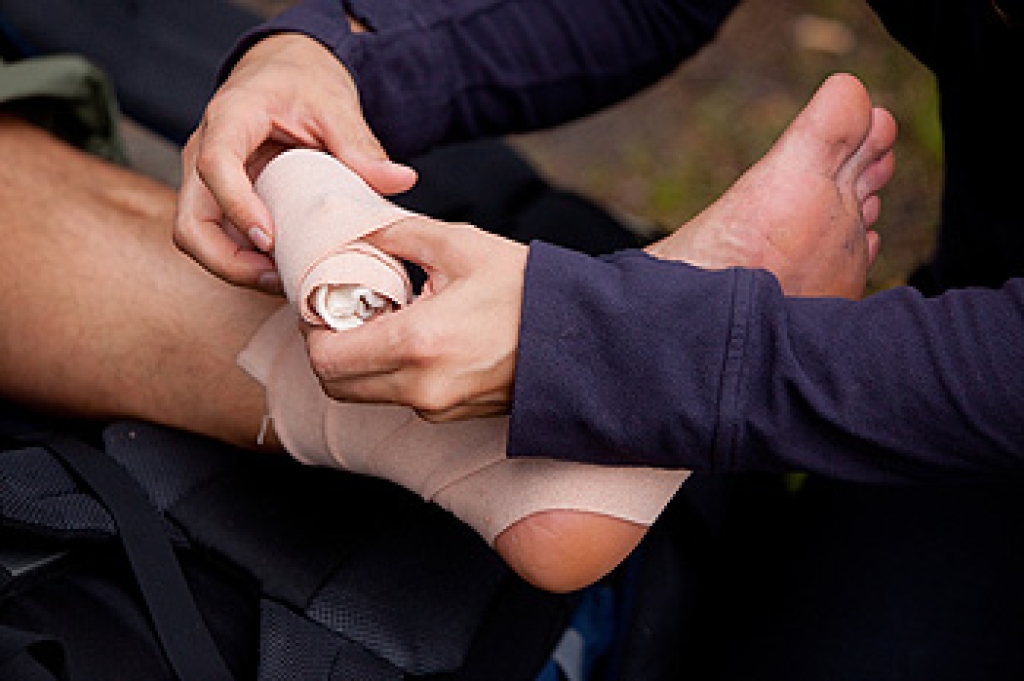Connect With Us
Blog
Blog
3 Grades of Ankle Sprains
Ankle pain can be caused by a variety of factors, with the most common one being a sprain—where the lateral (outside) ligaments of the ankle become overly stretched or torn. Sprains are classified as Grade 1 (ligament has be overly stretched, causing soreness and possibly inflammation), Grade 2 (ligament is partially torn, causing prolonged pain and swelling, and the ankle may be unable to sustain full weight), and Grade 3 (ligament is fully torn, an audible pop could have occurred, pain is severe with bruising and swelling, and the ankle is unable to sustain any weight and is unstable). Because ligaments don’t receive a lot of blood flow, it can take a while for them to heal, and people don’t always seek proper treatment for an ankle sprain. Improperly-healed ankle ligaments can lead to chronic ankle instability or even arthritis in the ankle joint over time. If you believe you have sprained your ankle, or are experiencing any type of ankle pain, it is suggested you contact a podiatrist.
Ankle sprains are common but need immediate attention. If you need your feet checked, contact one of our clinicians from The Footcare Centre. Our podiatrists can provide the care you need to keep you pain-free and on your feet.
How Does an Ankle Sprain Occur?
Ankle sprains take place when the ligaments in your ankle are torn or stretched beyond their limits. There are multiple ways that the ankle can become injured, including twisting or rolling over onto your ankle, putting undue stress on it, or causing trauma to the ankle itself.
What Are the Symptoms?
- Mild to moderate bruising
- Limited mobility
- Swelling
- Discoloration of the skin (depending on severity)
Preventing a Sprain
- Wearing appropriate shoes for the occasion
- Stretching before exercises and sports
- Knowing your limits
Treatment of a Sprain
Treatment of a sprain depends on the severity. Many times, people are told to rest and remain off their feet completely, while others are given an air cast. If the sprain is very severe, surgery may be required.
If you have suffered an ankle sprain previously, you may want to consider additional support such as a brace and regular exercises to strengthen the ankle.
If you have any questions please feel free to contact our office located in Weybridge, UK . We offer the newest diagnostic tools and technology to treat your foot and ankle needs.
What Are the Affects Cracked Heels Have on the Skin?
 There are two layers of skin that are called the dermis and epidermis. The latter is the outermost layer, and is where cracked skin often develops. Heel fissures is the medical name for cracked heels, which can come from standing on hard surfaces for the majority of the day. Additionally, wearing shoes that do not fit correctly may cause this condition to occur, and this can include wearing shoes that have an open back. There are medical conditions that may lead to cracked heels, such as diabetes, psoriasis and eczema. Patients have found mild relief when the feet are washed and thoroughly dried, followed by applying a good moisturizer to them. If you have cracked heels, it is suggested that you consult with a podiatrist who can effectively treat this ailment, and advise you on proper foot care techniques.
There are two layers of skin that are called the dermis and epidermis. The latter is the outermost layer, and is where cracked skin often develops. Heel fissures is the medical name for cracked heels, which can come from standing on hard surfaces for the majority of the day. Additionally, wearing shoes that do not fit correctly may cause this condition to occur, and this can include wearing shoes that have an open back. There are medical conditions that may lead to cracked heels, such as diabetes, psoriasis and eczema. Patients have found mild relief when the feet are washed and thoroughly dried, followed by applying a good moisturizer to them. If you have cracked heels, it is suggested that you consult with a podiatrist who can effectively treat this ailment, and advise you on proper foot care techniques.
Cracked heels are unsightly and can cause further damage to your shoes and feet. If you have any concerns, contact one of our clinicians from The Footcare Centre. Our podiatrists can provide the care you need to keep you pain-free and on your feet.
Cracked Heels
Cracked heels appear unappealing and can make it harder for you walk around in sandals. Aside from looking unpleasant, cracked heels can also tear stockings, socks, and wear out your shoes. There are several methods to help restore a cracked heel and prevent further damage.
How Do You Get Them?
Dry skin is the number one culprit in creating cracked heels. Many athletes, walkers, joggers, and even swimmers suffer from cracked heels. Age and skin oil production play a role to getting cracked heels as well.
Promote Healing
Over the counter medicines can help, especially for those that need instant relief or who suffer from chronic dry feet.
Wear Socks – Wearing socks with medicated creams helps lock in moisture.
Moisturizers – Applying both day and night will help alleviate dryness which causes cracking.
Pumice Stones – These exfoliate and remove dead skin, which allows for smoother moisturizer application and better absorption into the skin.
Change in Diet
Eating healthy with a well-balanced diet will give the skin a fresh and radiant look. Your body responds to the kinds of food you ingest. Omega-3 fatty acids and zinc supplements can also revitalize skin tissue.
Most importantly, seek professional help if unsure how to proceed in treating cracked heels. A podiatrist will help you with any questions or information needed.
If you have any questions, please feel free to contact our office located in Weybridge, UK . We offer the newest diagnostic and treatment technologies for all your foot care needs.
Read more about Solutions for Cracked HeelsBlog Archives
- 2025
- 2024
- 2023
- 2022
- 2021
- 2020


